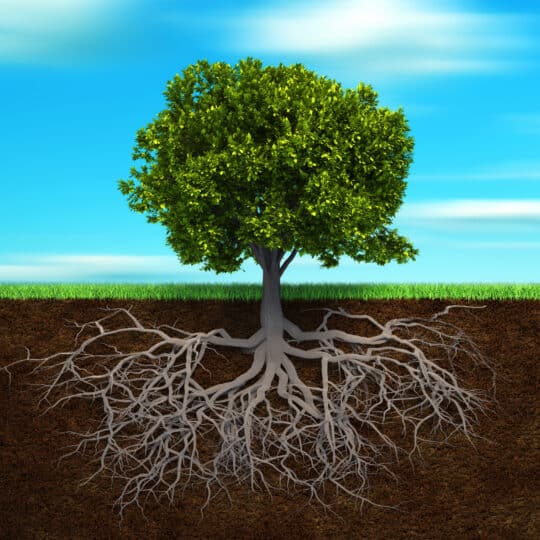Underlying Causes of Tree Stress
What’s Hiding Under the Bark and Roots
Posted
July 18, 2024

When any living thing is stressed, there are both internal and external signs. We can typically tell a tree needs help when its leaves prematurely change color and fall. But there are some underlying issues we may not see straight away. Learn the signs of tree stress that show up in the soil, roots, and trunk. Then contact Elite Tree Care to help restore its health.
Signs of Stress in the Bark and Trunk
The trunk and bark of a tree reveal a lot about its health. These signs may also show up any time of year, so you don’t have to wait to see if the leaves change or drop. Keep a close eye on the following areas to know when to act.
- Bark Texture. When bark starts to peel or crack it could be a natural sign of tree growth or indicate disease and injury. You can tell the tree is still healthy if there’s green, moist tissue underneath the bark.
- Trunk Structure. Large cavities, holes, or discolored fungal growth on the trunk or branches can indicate disease and weaken the tree.
- Hollow Trunk. A small hole on the outside can also mean there’s a larger hollow section on the inside. When left unchecked, this could potentially lead to the tree falling on its own, especially during a storm.
Whether you see signs of peeling, discolored bark, or open cavities, contact Elite Tree Care for a consultation to determine whether the tree needs treatment or not.
Underlying Tree Stress
Sometimes it’s harder to tell when a tree is in poor health, especially when the problem is rooted in the soil. A tree’s roots are where it pulls essential water and nutrients, so the health and safety of this area is crucial for a tree’s survival. Here are some areas and signs to assess on a regular basis:
- Root Collar. Keep the area where the trunk meets the roots free of obstructions to limit damage.
- Exposed Roots. This is already a sign that the tree may be in distress if the roots are buckling at the surface. Be careful not to further damage these roots by walking on them or hitting them with lawn and garden tools.
- Damaged Roots. Underground utility lines and construction can damage roots beneath the soil. Be aware of where these lines lay and keep tree lines in mind when planning new construction projects.
- Compacted Soil. This leads to poor drainage and limited access to nutrients. Aerate the soil around the tree to help open pathways for air, water, and nutrients to flow. This is especially important after construction when heavy machinery and foot traffic further compacts the soil.
If you notice any health changes in your tree or signs of root damage, it’s best to act quickly to limit further stress. The specialists at Elite Tree Care have the tools and knowledge needed to fully assess the tree’s structure, monitor root health, and test the soil’s nutrient level and compaction. Call 610-935-2279 today for a consultation on any area of your tree that needs attention. Give your tree the strength it needs to make it through the harsh summer season and thrive throughout the year.